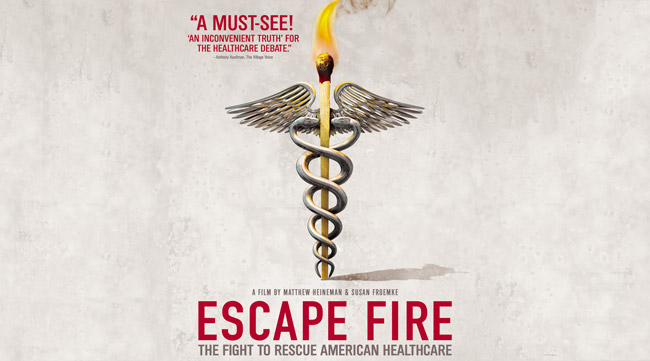You’ve probably heard the definition of insanity before:
Doing the same thing but expecting different results.
I’ve got another definition:
Agreeing to pay for a drastic and deforming medical procedure like a diabetic foot amputation but not paying for the early and preventative treatment that would make the procedure unnecessary.
But that is what our insurance system, our “healthcare” system, does. The foot amputation, a preventable consequence of uncontrolled diabetes, is a covered procedure under Medicare and many insurance policies. Getting nutritional counseling and an exercise prescription when someone is prediabetic is not. Our system pays doctors thousands of dollars to operate but pays a doctor $15 or $20 for an office visit where, if a little time is taken, the root of problem could be found and potentially treated with lifestyle modification.
If this doesn’t make sense to you either, I encourage you to check out Escape Fire, a documentary that details the dire state of our healthcare system (or disease management system as some might say) and the crisis to come if we don’t make changes now.
Here is the title explained from the film’s website:
escape fire noun,
- a swath of grassland or forest intentionally ignited in order to provide shelter from an oncoming blaze.
- an improvised, effective solution to a crisis that cannot be solved using traditional approaches.
In the research phase of ESCAPE FIRE, the filmmakers came across an influential speech delivered by Dr. Don Berwick years before he took office as the head of Medicare and Medicaid. The speech was published as a healthcare manifesto called Escape Fire: Lessons for the Future of Healthcare.
Dr. Berwick draws a parallel between the broken healthcare system and a forest fire that ignited in Mann Gulch, Montana. Just as the healthcare system lies perilously on the brink of combustion, the forest fire which seemed harmless at first was waiting to explode. A team of fifteen smokejumpers parachuted in to contain the fire, but soon they were running for their lives, racing to the top of a steep ridge. Their foreman, Wag Dodge, recognized that they would not make it.
With the fire barely two hundred yards behind him, he did a strange and marvelous thing. He invented a solution. His crew must have thought he had gone crazy as he took some matches out of his pocket, bent down and set fire to the grass directly in front of him. The fire spread quickly uphill, and he stepped into the middle of the newly burnt area, calling for his crew to join him.
But nobody followed Wag Dodge. They ignored him, clinging to what they had been taught, and they ran right by the answer. The fire raged past Wag Dodge and overtook the crew, killing thirteen men and burning 3,200 acres. Dodge survived, nearly unharmed.
Dodge had invented what is now called an “escape fire,” and soon after it became standard practice. As Berwick says in the film, “We’re in Mann Gulch. Healthcare, it’s in really bad trouble. The answer is among us. Can we please stop and think and make sense of the situation and get our way out of it?”
The problem is so eloquently illustrated in the story of one doctor featured in the film, Dr. Erin Martin. She works at a clinic for low-income families and genuinely seems to care about her patients. It follows her as she tries to do the right thing for her patients but is instead encouraged to increase “productivity”. Productivity in our insane system is measured not on the wellness of her patients but instead how many patients she can see per hour. Her frustration motivates her to seek out a better way, a place where productivity means helping people improve the quality of their lives and make changes that don’t have negative side effects – like eating better and managing their stress.
There are other players in this story. Dr. Andrew Weil, Dr. Dean Ornish and former head of Medicare and Medicad Dr. Don Berwick are some of the more notable names. But the stories that really touch me are those of the every day people like Dr. Martin or Yvonne Osborne, a women who had her first heart catheterization and bypass surgery at age 34. They, like many others in the film, are victims of system they trust but actually has little incentive to produce true health and wellness.
The story does sound grim but there are bright spots. The movie highlights solutions like the workplace wellness programs put in place by Safeway and the differences being felt by their employees as well as the positive impact on the company’s bottom line. There are also the ground breaking methods at the Cleveland Clinic where doctors work as a team and are measured by health outcomes, not the number of procedures performed.
If you’re interested in true healthcare reform, watch this movie. Share it with your friends. Show it at lunch in your office. Talk to your doctor about it. Tell your congressperson and senators that this is insanity and you want better. Most importantly take care of your own health. Don’t wait for someone to save you, set your own escape fire.



